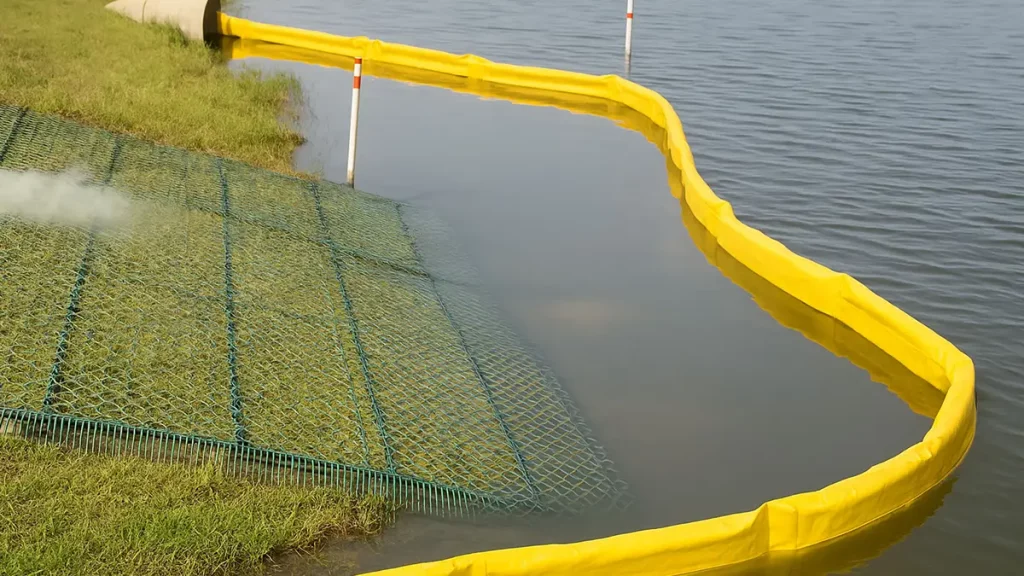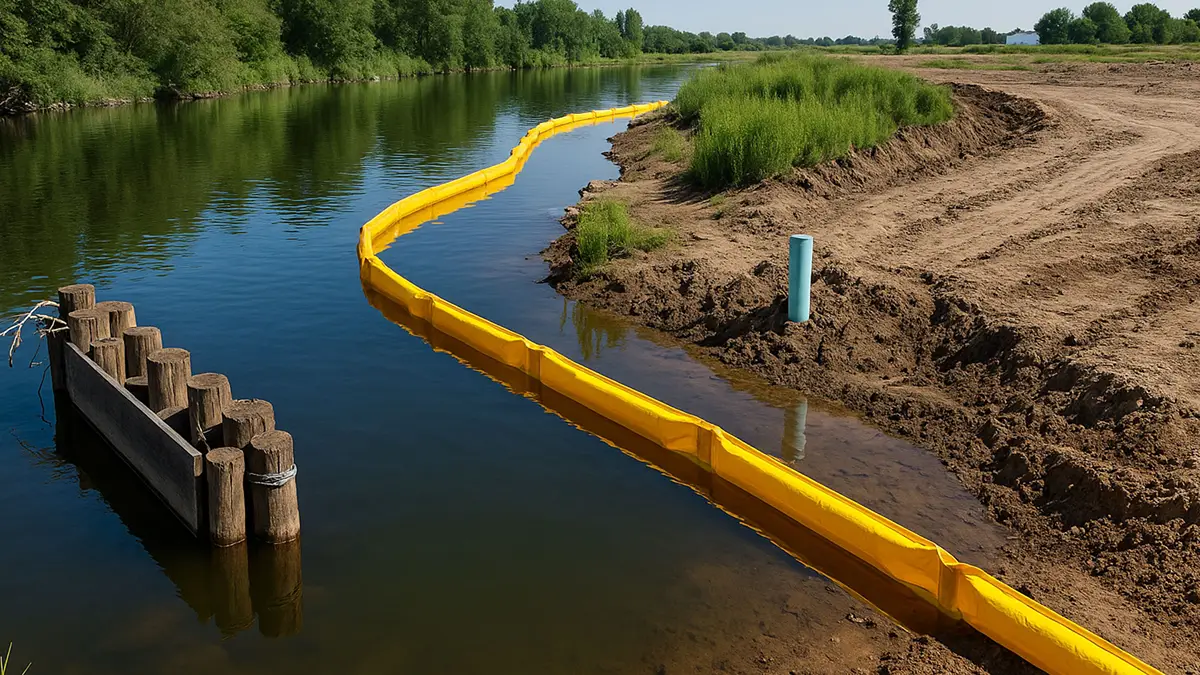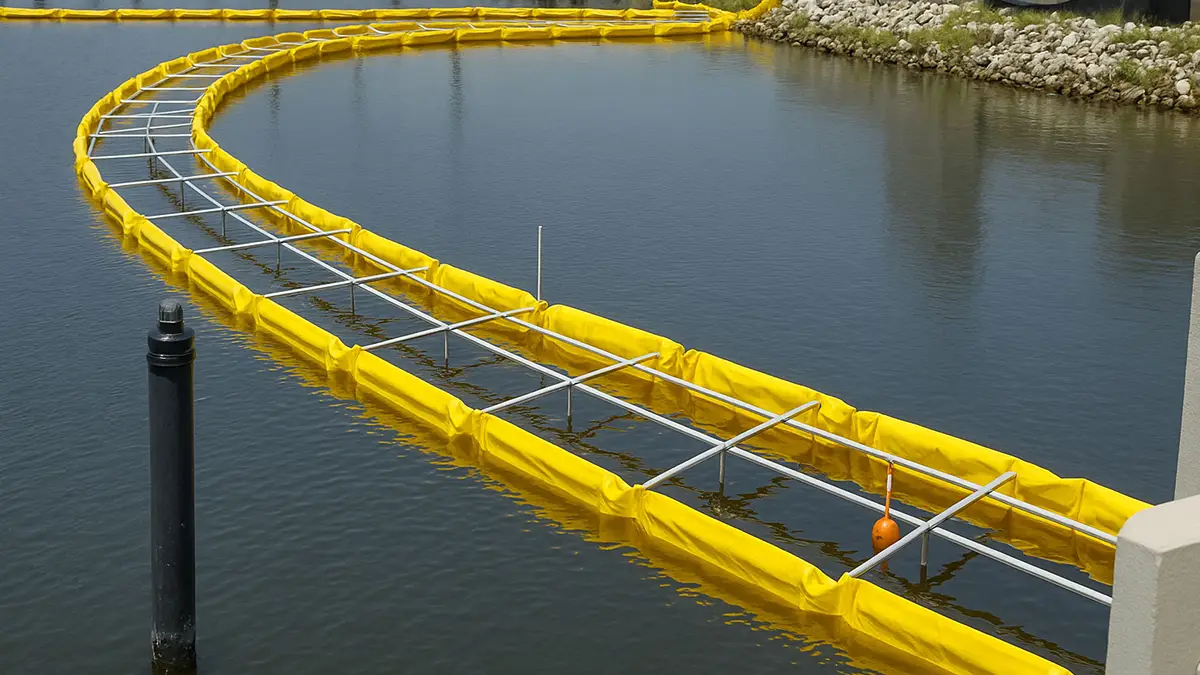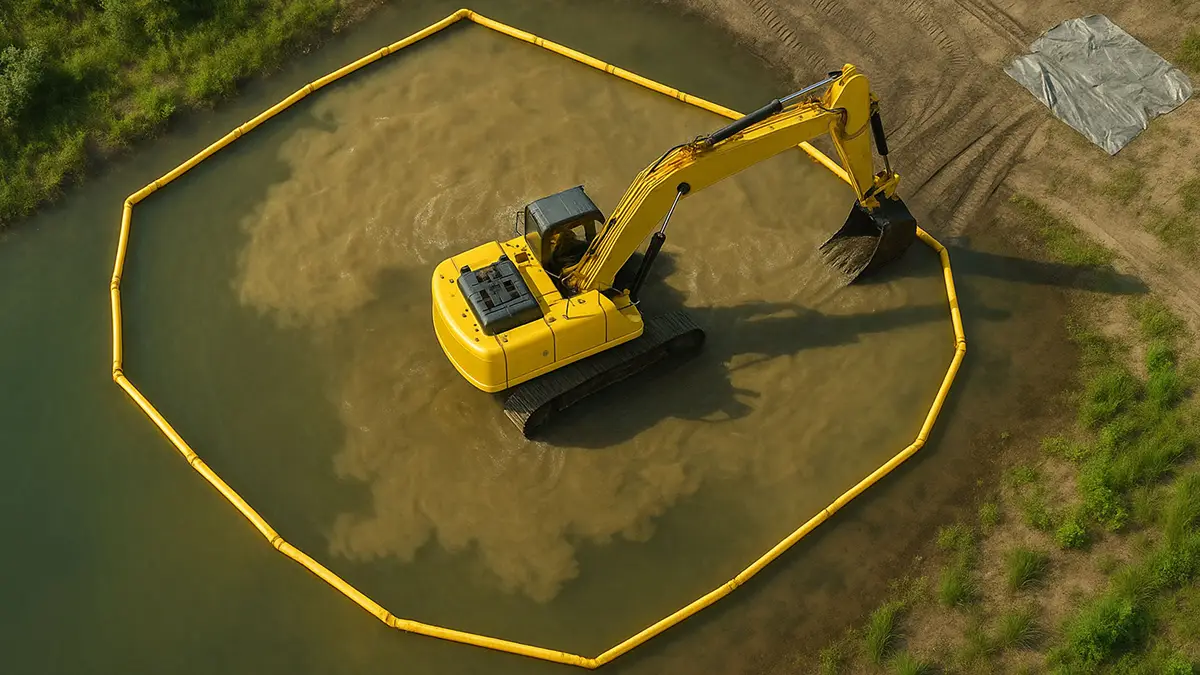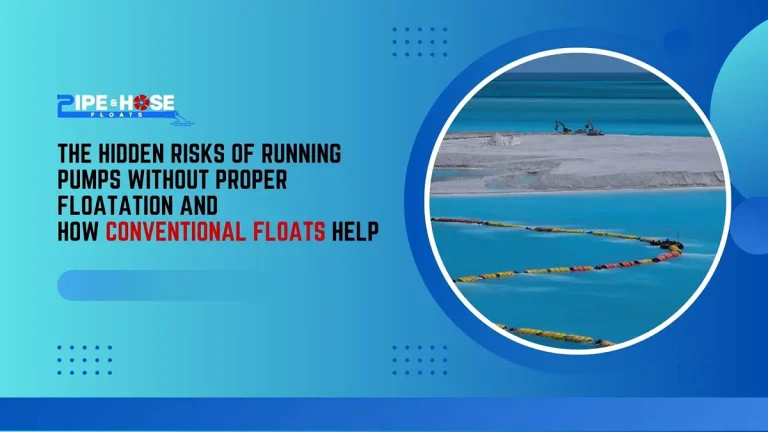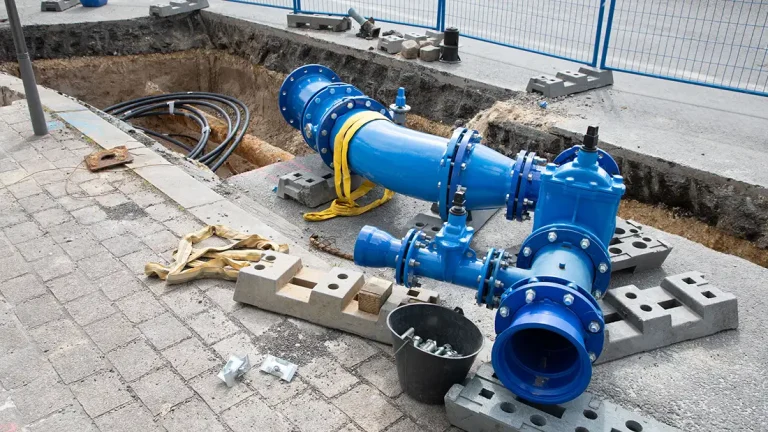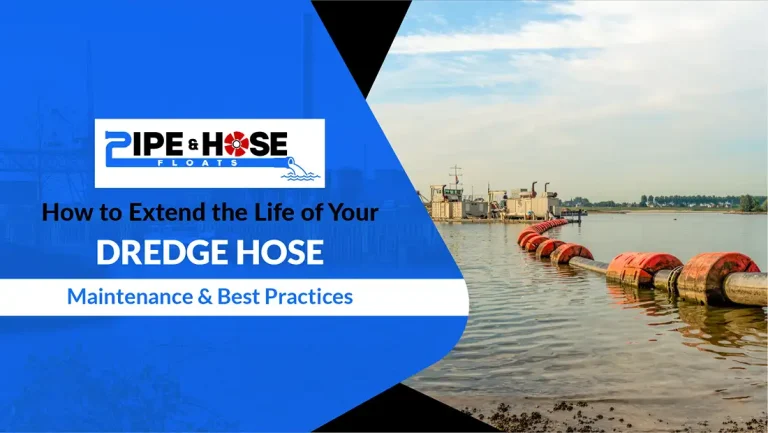Introduction
Sediment runoff is one of the most significant environmental issues at construction sites situated near water bodies. Whether involved in dredging, marine construction, or shoreline stabilization, contractors must ensure strict control over sediment dispersion. An effective sediment control plan is crucial, not only to meet environmental regulations but also to protect delicate aquatic ecosystems from turbidity and pollution.
A proven solution for managing suspended particles in water is the turbidity curtain. These specially designed barriers provide a physical barrier to contain silt and sediment during active construction. A well-deployed turbidity curtain ensures compliance with sediment control requirements and minimizes the project’s ecological footprint.
Turbidity curtain installation is a crucial component of any effective sediment management strategy. Installing the curtain properly ensures that suspended solids are kept within the designated work zone, preventing contamination of the surrounding water. A poorly executed turbidity curtain installation can result in sediment leakage, regulatory violations, and long-term environmental damage.
Among the available options, floating turbidity curtains are especially effective in surface-level sediment containment. Their design enables them to float on the water’s surface while maintaining a vertical barrier that extends to the bottom, providing full-depth protection. Floating turbidity curtains are ideal for calm to moderately flowing water conditions, where surface disturbances have a significant impact on sediment mobility.
In this comprehensive guide, we will walk you through the key components of designing an efficient sediment control plan using turbidity curtains. From understanding different curtain types to mastering turbidity curtain installation, this blog provides actionable insights that will help you choose the right solution. With the right approach, floating turbidity curtains can ensure environmental compliance, improve site safety, and protect nearby ecosystems from harmful sedimentation.
What is a Turbidity Curtain?
A turbidity curtain is a temporary floating barrier used to contain and control the dispersion of suspended sediments in water. Typically made from geotextile or PVC fabric, these barriers are used in rivers, lakes, coastal waters, and construction zones where underwater excavation or earthwork takes place.
The purpose of a turbidity curtain is to isolate sediment-heavy areas, preventing particles from migrating into surrounding clean waters. A well-designed turbidity curtain reduces environmental impact and helps contractors stay in compliance with regulatory requirements.
Floating turbidity curtains consist of a floatation component at the top, a continuous fabric curtain that hangs vertically in the water, and a ballast chain at the bottom to keep it submerged. The curtain is anchored to maintain its position and allow sediment to settle within the controlled area.
Types of Turbidity Curtains
Choosing the right turbidity curtain is crucial for effective sediment control in water-based construction projects. Each site presents distinct environmental challenges, ranging from varying water flow rates to diverse weather conditions and varying sediment loads. To meet these diverse needs, there are three primary types of turbidity curtains, each tailored for specific applications. Understanding the characteristics of each type will help you make the best choice for your project and ensure a successful turbidity curtain installation.
Type 1: Calm Water Turbidity Curtains
Type 1 turbidity curtains are designed for use in sheltered, low-energy environments such as ponds, canals, reservoirs, and small lakes. These settings typically have minimal current or wave action. The curtains are constructed from lightweight, permeable, or impermeable materials and are easy to handle, transport, and deploy.
Due to their simple design, Type 1 turbidity curtain installation is straightforward and requires fewer anchoring components. This makes them ideal for short-term or small-scale projects, such as dock repairs, landscaping near water bodies, or stormwater management tasks. When correctly installed, floating turbidity curtains of this type can effectively control sediment dispersion without requiring heavy equipment or large crews.
Type 2: Moderate Flow Turbidity Curtains
Type 2 turbidity curtains are suited for water bodies with moderate flow, such as rivers with light currents, bays, or inland waterways that experience occasional boat traffic. These turbidity curtains are more durable than Type 1 and are made with reinforced fabrics, stronger floatation components, and enhanced ballast systems.
The added strength of Type 2 curtains makes them more stable in turbulent waters. A proper turbidity curtain installation for this type includes securely anchoring the curtain at regular intervals and using tension cables to maintain position during water movement. Floating turbidity curtains in this category can span larger areas while still offering effective sediment control, especially in medium-sized dredging or marine construction projects.
Type 3: High-Energy Turbidity Curtains
Type 3 turbidity curtains are designed for high-energy environments where strong tides, high wind conditions, or significant water currents are present. These include coastal areas, offshore construction sites, and deep-water dredging zones. These curtains are built with heavy-duty, impermeable materials and feature high-strength connectors, robust anchoring systems, and extra flotation to ensure stability under extreme conditions.
Turbidity curtain installation for Type 3 curtains requires careful planning and professional execution. It may involve divers, specialized equipment, and custom anchoring methods to secure the curtain in fast-moving water. Floating turbidity curtains in this class offer the most protection but also require the highest level of maintenance and oversight.
Choosing the Right Curtain for Your Project
When selecting the appropriate turbidity curtain, consider factors such as water depth, current speed, sediment type, and the duration of your project. In many cases, floating turbidity curtains used in calm to moderately flowing environments provide a good balance between effectiveness and ease of deployment. Regardless of the type, always follow best practices for turbidity curtain installation to ensure long-term performance and compliance with environmental regulations.
Pre-Planning Considerations for Sediment Control
Designing a sediment control plan with a turbidity curtain begins well in advance of installation. It involves detailed site evaluation and project-specific planning.
1. Site Assessment
Understand the physical characteristics of the site. Assess water depth, current velocity, wave action, and sediment type. The size and type of turbidity curtain you choose must match these parameters.
2. Environmental Regulations
Permits from local environmental agencies are often required for deploying floating turbidity curtains. Understand federal, state, and local guidelines that govern sediment control in your area.
3. Stakeholder Communication
Effective planning includes engaging with environmental officers, engineers, and stakeholders to ensure that the sediment control plan aligns with expectations and requirements.
4. Emergency Contingencies
Account for weather conditions and project delays. A comprehensive sediment control plan should be flexible enough to adjust during emergencies.
Step-by-Step Guide to Designing a Sediment Control Plan
This section walks you through the detailed steps of crafting a reliable sediment control plan using a turbidity curtain.
Step 1: Define Sediment Control Objectives
Identify the goals of your sediment control efforts. Are you trying to minimize impact on fish habitats, protect drinking water sources, or ensure compliance? Clarifying objectives helps you choose the right type of curtain and determine the most suitable deployment method.
Step 2: Select the Right Turbidity Curtain
Consider the site conditions discussed earlier. If you’re working in open water with wave action, Type 3 turbidity curtains are the ideal choice. For calm areas, a lighter Type 1 curtain may suffice.
Step 3: Determine Curtain Dimensions
The length and depth of the turbidity curtain must be tailored to the project layout. Ensure the curtain extends from the surface to just above the bottom, allowing for sediment settlement while preventing resuspension.
Step 4: Choose Anchoring and Floatation Systems
Anchoring is critical to keep the curtain stable. Use bottom anchors, stakes, or pilings depending on site conditions. The floatation system should be adequate to keep the curtain at the surface even under stress.
Step 5: Plan Deployment Zones
Strategically locate deployment zones based on sediment sources and water flow patterns. Use multiple segments of floating turbidity curtains if necessary to create containment cells.
These planning steps help reduce the spread of sediment and optimize overall project efficiency.
Turbidity Curtain Installation: Best Practices
Successful sediment control begins with proper turbidity curtain installation. A poorly installed barrier can lead to sediment leakage, environmental violations, and increased project costs. On the other hand, careful planning and best practices can ensure long-term effectiveness, reduce maintenance needs, and support regulatory compliance. Below are the key best practices to follow for installing your turbidity curtain efficiently and safely.
1. Conduct Thorough Pre-Installation Checks
Before deploying any curtain system, thoroughly inspect every component. Verify that the turbidity curtain fabric is intact with no tears or wear that could compromise its performance. Check the floatation devices to ensure they are airtight and functional. Additionally, confirm the ballast chain is securely fastened and evenly distributed to keep the curtain stable once deployed. A sound turbidity curtain installation always begins with quality control at the material level.
2. Use a Staged Deployment Approach
Rather than deploying the curtain all at once, unroll and float the curtain on the water’s surface gradually. This approach allows better control over placement and minimizes stress on the material. Avoid dragging the curtain into place, as this can damage the fabric or displace internal components. For large-scale deployments, consider using boats or cranes to maneuver the floating turbidity curtains into position without strain.
3. Strategic Anchor Placement is Crucial
Anchor systems provide the stability needed to withstand currents, wind, and wave action. During turbidity curtain installation, place anchors at intervals of 25 to 50 feet, depending on environmental conditions such as current speed and wave height. For high-energy sites, additional anchoring points and tension cables may be required. Proper anchoring keeps the turbidity curtain taut, preventing sagging or drifting, both of which reduce sediment containment performance.
4. Secure Seams Through Overlapping
When installing multiple sections of a turbidity curtain, ensure that each section overlaps by at least three feet. Use Velcro flaps, industrial ties, or grommet-fastened connectors to secure the overlaps. This step is critical for maintaining a continuous barrier. Without proper sealing, sediment-laden water can escape through the seams, undermining your entire turbidity curtain installation effort.
5. Adapt Installation to Flowing Water Conditions
In areas with noticeable currents, align the turbidity curtain at an angle to the flow, typically downstream, rather than deploying it perpendicular to the flow. This orientation reduces pressure on the curtain, allowing water to flow more naturally and decreasing the likelihood of structural failure. High-flow environments may also benefit from additional support components, especially when using floating turbidity curtains in open or tidal waters.
6. Ensure Visibility and Safety
To protect both the construction team and passing vessels, mark the perimeter of the turbidity curtain with buoys, reflective tape, signage, or solar lights. This is particularly important for floating turbidity curtains installed in navigable waterways, harbors, or near boating channels. Proper markings help prevent accidents and reinforce your safety protocols.
Monitoring and Adjusting the Curtain During the Project
Proper turbidity curtain installation is just the beginning of an effective sediment control plan. To maintain environmental compliance and ensure peak performance, ongoing monitoring and timely adjustments are critical. Construction sites near water are dynamic, with changing weather, currents, and operational activity all impacting the efficiency of your turbidity curtain. Regular inspections, real-time modifications, and detailed documentation help safeguard both the environment and your project timeline. Below are the best practices to follow for managing your floating turbidity curtains throughout the construction process.
1. Regular Inspections
Daily inspection is a non-negotiable step in managing turbidity curtains, especially in active marine environments. After storms, heavy rain, or tidal fluctuations, it’s essential to examine the curtain closely. Look for visible damage such as tears in the fabric, floatation failures, sagging, or detached ballast chains. Also, confirm that anchors remain secure and that the turbidity curtain installation hasn’t been compromised. Even a small rip or displaced anchor can significantly reduce the curtain’s effectiveness, allowing sediment to escape into the surrounding water.
2. Real-Time Adjustments
Water conditions can change rapidly, and your turbidity curtain must be capable of adapting. If you notice that the curtain is drifting, sagging, or has shifted due to boat wakes or strong currents, take immediate corrective action. Adjusting anchor lines, tightening tension cables, or repositioning sections of the curtain may be necessary to ensure optimal performance. Over time, sediment can accumulate on one side of the curtain, potentially affecting buoyancy and barrier performance. For long-term projects, it’s also vital to check anchor wear and fabric stress points to ensure the durability of your floating turbidity curtains remains intact.
3. Record Keeping
Documentation is a crucial but often overlooked part of sediment control. Maintain a detailed logbook of inspections, repairs, repositioning efforts, and any issues observed during the project. These records not only demonstrate your commitment to environmental standards but may also be required by local or national regulatory authorities. By keeping track of all activities related to turbidity curtain installation and maintenance, you build a clear record of compliance and performance assurance.
4. Seasonal Considerations
Environmental conditions can vary dramatically throughout the year, and your turbidity curtain system must be able to handle these fluctuations. Cold temperatures can cause certain materials to become brittle, while extreme heat may weaken floatation components or cause UV degradation. Select floating turbidity curtains that are constructed with seasonally resilient materials, particularly if your project spans several months or if you’re working in harsh climates. In colder regions, ice formation can also stress anchor lines and affect the integrity of your curtain system.
Conclusion and Key Takeaways
Designing and implementing an effective sediment control plan is essential for any construction or dredging project that impacts nearby water bodies. A properly selected and installed turbidity curtain is one of the most effective solutions available for preventing sediment runoff and protecting aquatic ecosystems. When correctly managed, it serves as a reliable barrier that maintains water clarity and supports regulatory compliance.
Successful sediment control requires more than just deploying a turbidity curtain, it involves careful planning, proper turbidity curtain installation, and continuous monitoring. Each project site is unique, and selecting the appropriate type of turbidity curtain based on site-specific conditions, such as water flow, weather patterns, and sediment type, is crucial.
When these elements are implemented correctly, turbidity curtains can significantly minimize environmental disruption, control sediment dispersion, and help you maintain full compliance with local and federal regulations. An expertly managed turbidity curtain installation not only protects the environment but also enhances the long-term success of your project.

